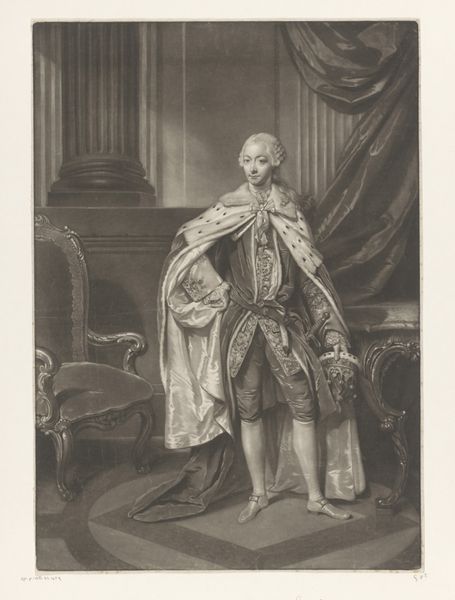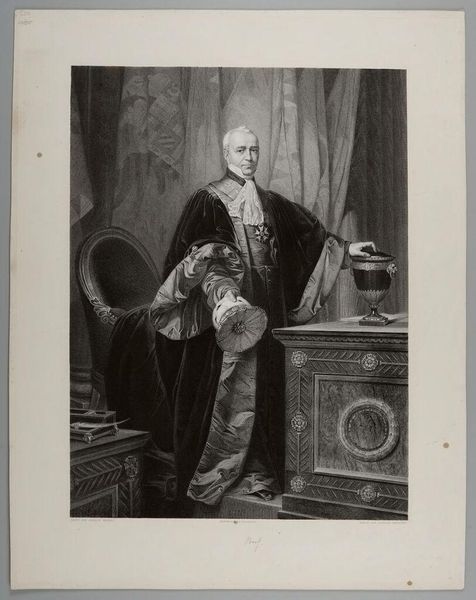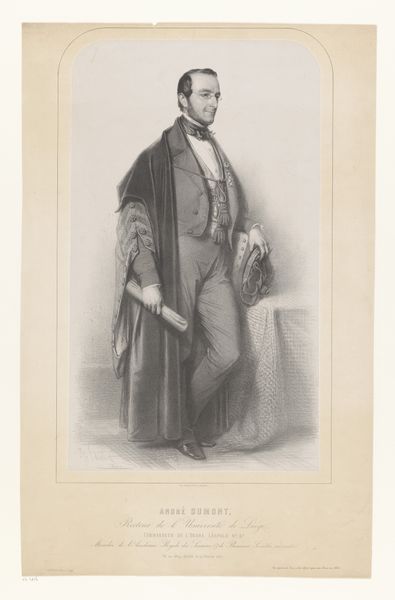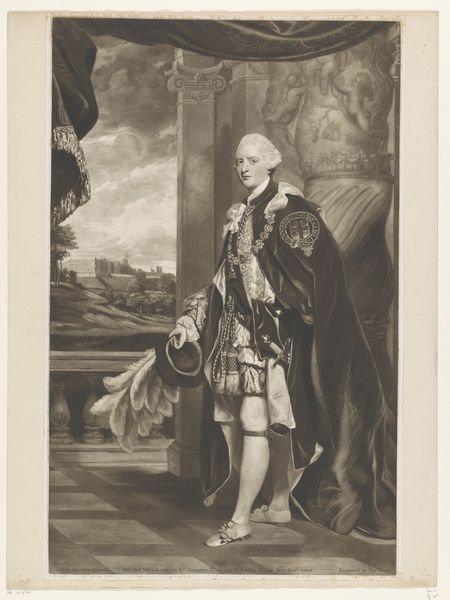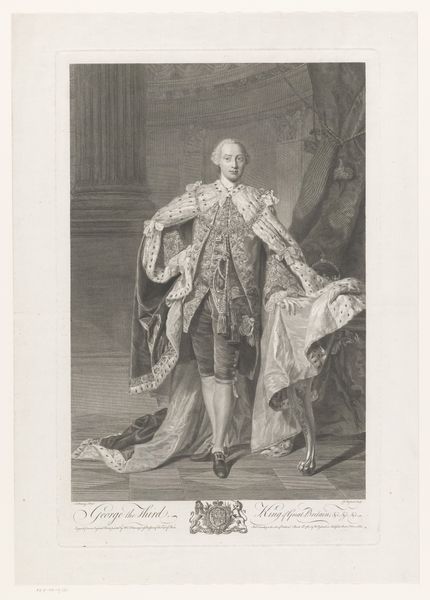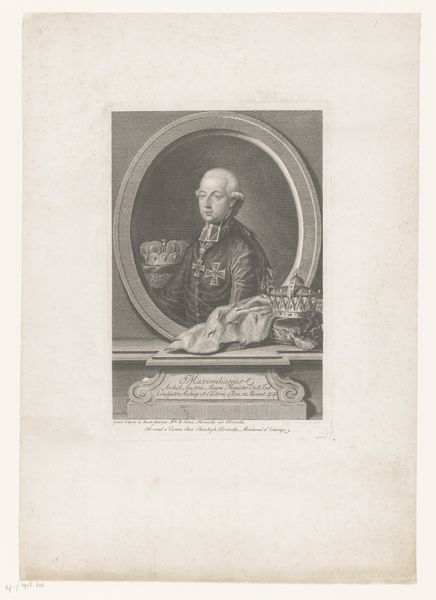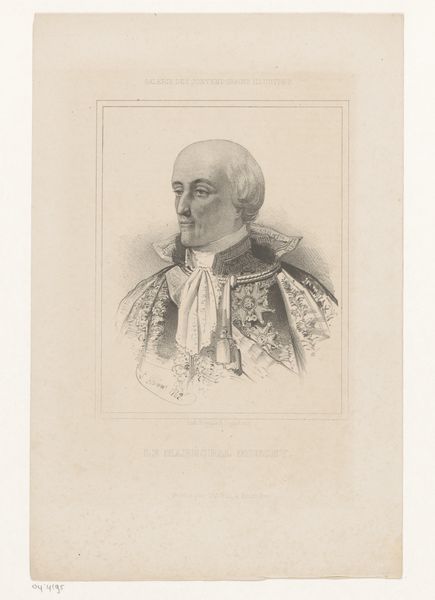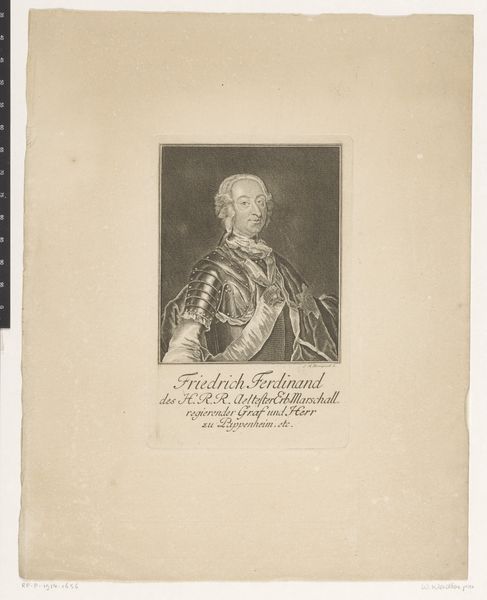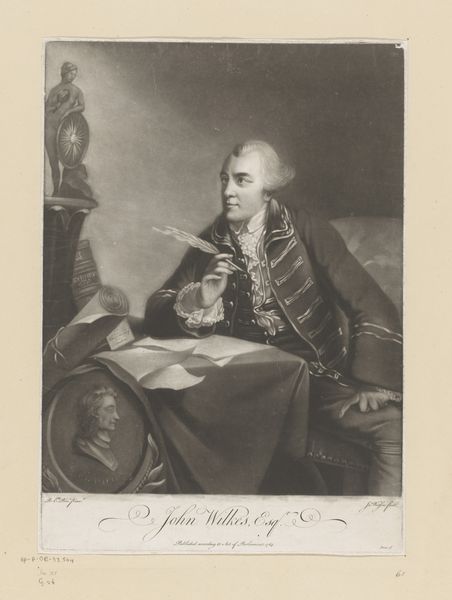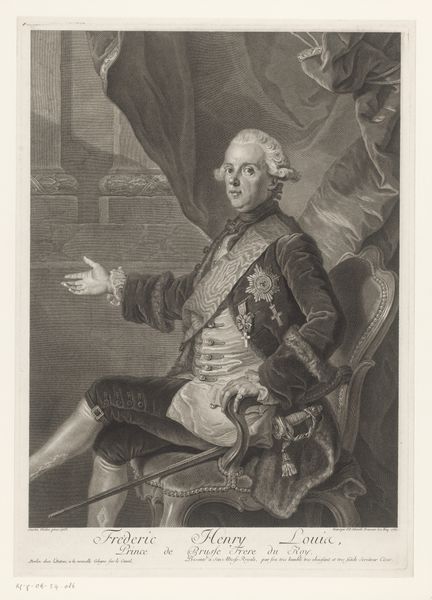
Portret van Philip Yorke, gekleed als ridder van de Orde van de Kousenband 1836
0:00
0:00
print, engraving
#
portrait
# print
#
history-painting
#
engraving
#
realism
Dimensions: height 305 mm, width 223 mm
Copyright: Rijks Museum: Open Domain
Curator: My first impression of this engraving, made in 1836 by William Giller, portraying Philip Yorke, is that of stately formality. There's something quite grand, even slightly imposing, about the subject, from his ceremonial robes to the somewhat austere setting. What catches your eye? Editor: What really comes through to me, looking at "Portret van Philip Yorke, gekleed als ridder van de Orde van de Kousenband," is the overwhelming performance of masculine power and privilege. Every detail, from the regal clothing, the specific accoutrements designating him a knight of the Order of the Garter, to his confident gaze seems deliberately constructed. I wonder what messages were conveyed through this portrayal of the Earl in the social contexts of its time. Curator: That's a vital question to pose, as it emphasizes that prints such as this played an essential public role. They shaped, confirmed, and visually disseminated ideas about rank and the importance of tradition. Considering this particular print, note the realism of the portraiture, in conjunction with the idealizing effect achieved through its medium and through its explicit and symbolic communication of Yorke’s position in the world. Editor: Exactly. The very choice to depict Yorke dressed in ceremonial garb speaks volumes. It connects him directly to historical narratives of power, subtly justifying his status through association with lineage and honor. We have to ask how images like these influenced conceptions of leadership and legitimacy, who saw them, and what impact this circulation of images might have had in bolstering existing social hierarchies, or contesting them, for that matter. Curator: It's crucial to also remember the materiality of the work itself. As a print, specifically an engraving, it would have allowed for relatively wide circulation compared to an original painted portrait. This democratization, so to speak, made these images of aristocracy more accessible, while also reinforcing the prestige and artistry connected to their creation. Editor: Absolutely. This work invites a deeper inquiry into representation and social impact, questioning whose stories are told and how they become entrenched in the visual culture and historical narrative of an era. Curator: Indeed, seeing past the obvious grandeur unveils complex narratives on social stature and visual authority. Editor: A reminder that every image, no matter how straightforward, functions as a point of intersection between art and historical currents.
Comments
No comments
Be the first to comment and join the conversation on the ultimate creative platform.
